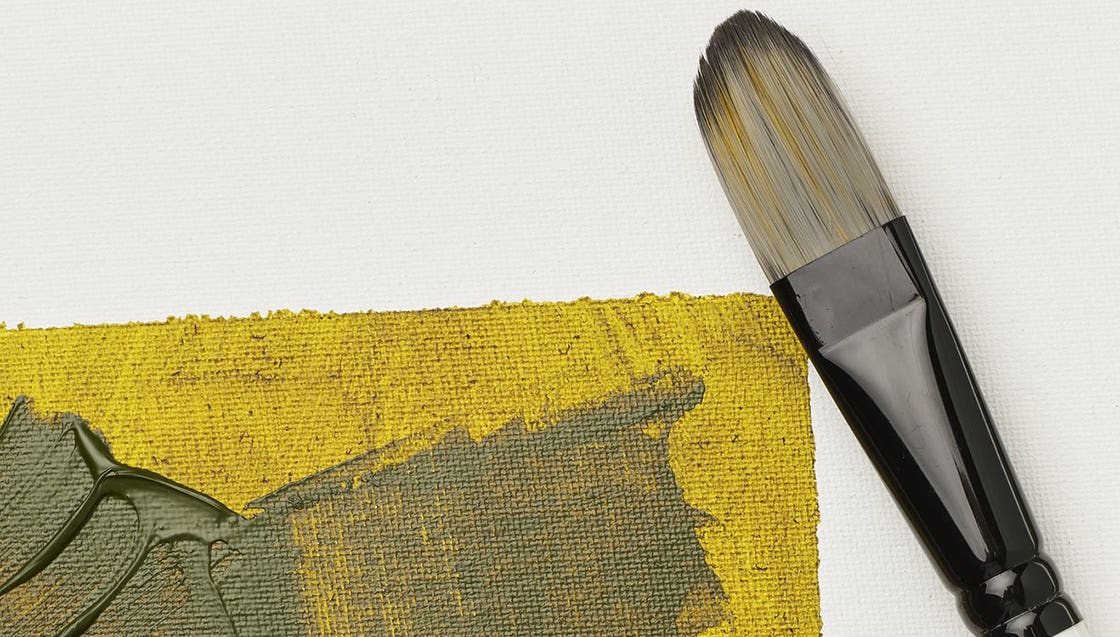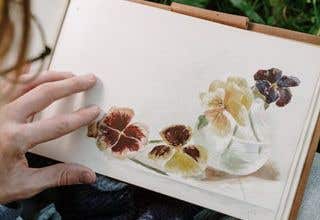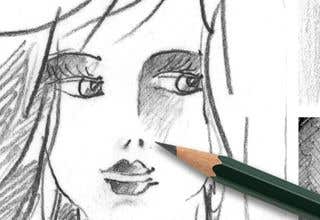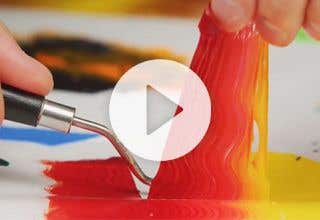As an artist, you know that the quality of your work depends on the tools you use. Your paintbrushes are no exception! You will want to use the best brush for the job, so let’s take a look at some of the most common brush shapes and what they're used for.

Round Brush
A round brush is a type of paintbrush characterized by its rounded bristles that form a circular shape. One of the main benefits of using a round brush is its ability to provide precise strokes and fine details in your artwork. With its sharp edges and pointed tip, you can achieve thin lines and subtle curves that make your artwork look more polished and refined. This makes it ideal for detailed work such as outlining or adding intricate patterns or lettering to your paintings.
Another great benefit of using a round brush is its versatility. Round brushes come in different sizes so you can choose one that is suitable for any type of painting project. Whether you want to paint thin lines or broad strokes, blend colours together or draw fine dots, a round brush can do it all.
A round brush also offers great stroke control when painting, allowing you to adjust the pressure on the bristles depending on what kind of effect you’re going for. The control that comes with using this type of brush allows you to create smooth transitions between light and dark areas in your work as well as adding texture where needed. This makes it possible to create more dynamic compositions with ease.
Lastly, one major advantage of using a round brush is its improved flow of paint which results in smoother application on canvas or paper surfaces. The shape and design of this particular type of brush helps keep paint evenly distributed so that it flows smoothly without leaving any clumps or streaks behind. This makes it perfect for creating consistent layers and colour gradients in your artwork.
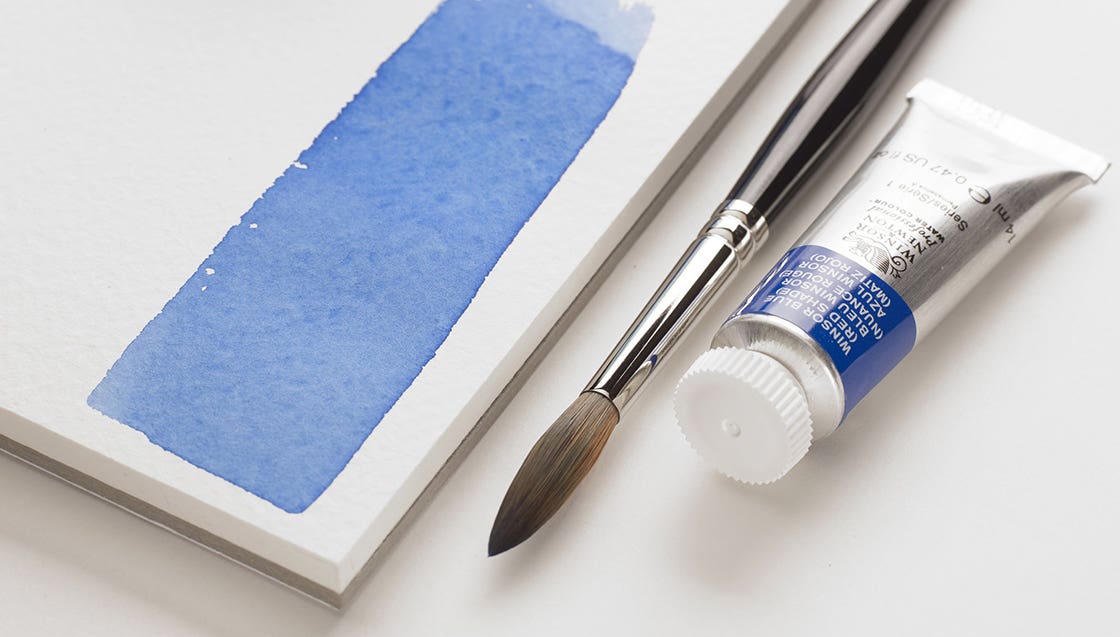 Flat Brush
Flat Brush
Flat brushes are great for achieving clean, sharp lines. If you're working on a project that requires precise lines, then a flat brush is definitely the way to go. They're also good for painting large expanses of colour, like skies or fields.
Another advantage of flat brushes is that they can be used for both broad strokes and fine details. By turning the brush on its side, you can create wide swaths of colour; by holding it upright, you can paint more delicate details. This versatility is one of the things that makes flat brushes so popular among artists.
They are also easy to clean. Since flat brushes have fewer bristles than other types of brushes, they're less likely to get clogged with paint. This makes them easy to clean and maintain.
Filbert Brush
Filbert paintbrushes are a type of brush that is named for its oval-shaped head. They are typically used for blending and creating soft edges, making them ideal for use with oil or acrylic paints, however because of their relatively large size, they may not be suited for detailed work.
The oval shape of the bristles allows for more even coverage than round brushes and they're less likely to leave brushstrokes behind than other types of brushes.
Another advantage of filbert brushes is that they hold a lot of paint. This means that you won't have to stop as often to dip your brush in paint, which can save you time if that is important to you.
Because of their shape, filbert paintbrushes can be used for a variety of painting techniques. For example, they're great for blending colours together or creating soft edges. If you're looking to experiment with new techniques, a filbert brush is a great option.
Mop Brush
A mop brush is a large paintbrush with soft bristles that come to an oval shape at the end. The bristles are usually made from natural fibres like squirrel hair or hog bristle, which are well suited for holding lots of fluid and allowing you to achieve beautiful washes or large areas of colour on your painting surface.
The wide, flat shape allows you to cover a lot of area quickly and easily, while still giving you control over where the paint is going. You can also use them for wetting surfaces before adding new layers of paint or blending two colours together for more subtle effects. They are also great for absorbing excess media from your painting surface after applying multiple layers of paint or other mediums.
The versatility of mop brushes means that they can be used with any type of painting medium-acrylics, oils, watercolours—and with any type of canvas or paper surface. So don’t be afraid to experiment! Try using them with different types of paints and papers until you find the combination that works best for you and your particular style.
Fan Brush
For those who like experimentation and texture, fan brushes can be used to create a variety of interesting effects. For example, you can use them to create soft shadows or blend colours together. Whether you are painting with watercolour, acrylic or oils, fan brushes can be used for a variety of different painting techniques.
While fan brushes are not as versatile as other brushes, they are great for experimentation and given that they don’t lend themselves to detailed work, they are relatively easy to master.
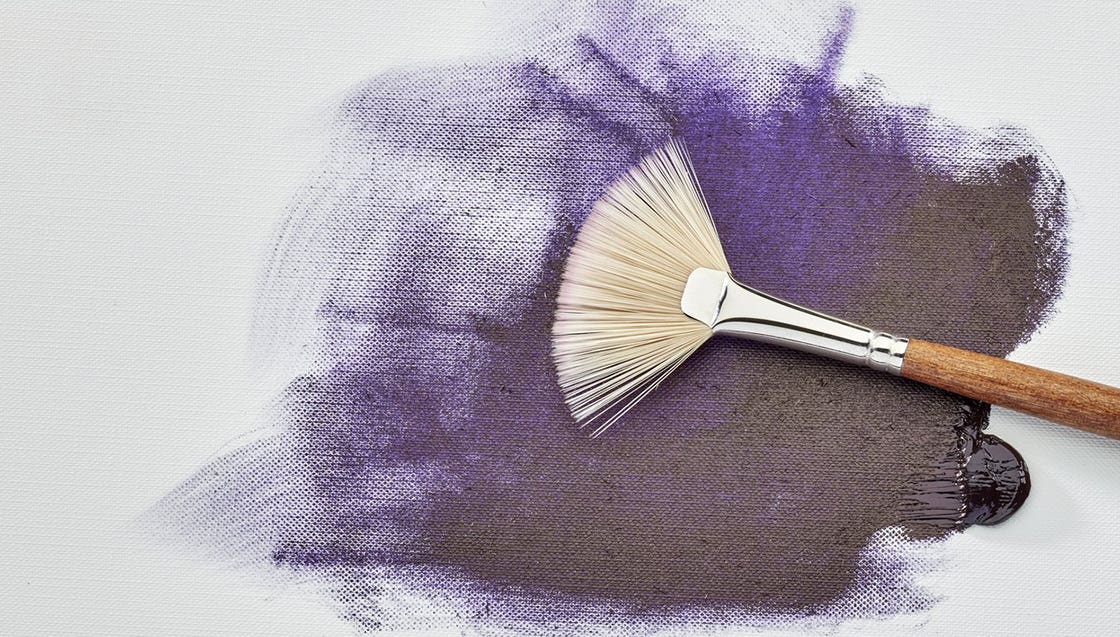
Angular Flat Brush
Flat angular paint brushes are perfect for creating texture and filling in large areas. The flat shape of the brush head provides good coverage when painting, making it quick and easy to fill in large areas of canvas. The angled tip makes it easy to get into tight corners and crevices, making it ideal for textured paintings. Additionally, angle paint brushes can be easier to control than other types of brushes because you can use them at different angles to create different strokes.
The angled shape of the brush allows for better control over the direction and pressure of the brush as well as enabling tiny adjustments in line width and direction while still keeping your hand steady. This increases accuracy when painting curves, circles, or straight lines quickly and accurately without making mistakes or having to start over again from scratch. With improved control comes less frustration and more beautiful artwork!
Finally, angle paint brushes are versatile - they can be used for everything from small details to broad strokes - so no matter what kind of painting you are working on, an angle brush can probably handle it.
So there you have it, the shapes of paint brushes explained. Round, flat, angled brushes – they all have their own unique purpose in painting. If you’re looking for a full range of brush shapes to choose from, Eckersley’s is the perfect place to shop. With over 50 years of experience supplying artists with the best quality paints and painting supplies around, we know our stuff when it comes to brushes!

